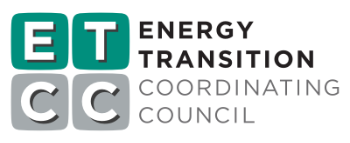Project Info
COMPLETE
Project Title
Variable Refrigerant Flow (VRF) Refrigerant Management Market Assessment
Project Number ET22SWE0020 Organization SWE (Statewide Electric ETP) End-use HVAC Sector Commercial Project Year(s) 2022 - 2023Project Results
This report seeks to examine the impact of Variable Refrigerant Flow (VRF) technology in the context of California's energy and environmental policy objectives and evaluate the suitability of continuing to incentivize VRF technology within utility energy efficiency portfolios, considering its impact on greenhouse gas (GHG) emissions and refrigerant usage.
The key objectives of this report are to (1) estimate the existing stock of refrigerants in California buildings’ HVAC systems by equipment type; (2) calculate the potential impact of these systems leaking on the State’s emissions reduction goals; (3) review current policy objectives to drive heat pump adoption and the requirements to reduce refrigerants; (4) cross-examine the emissions and efficiency impact of VRF technology against these policies and HVAC technology alternatives; and (5) identify and recommend actions needed to ensure utility efficiency incentives align and support CARB’s policy to reduce GHG emissions and HFC refrigerant-based HVAC specifically.
A range of approaches—including both primary and secondary research methodologies—were employed to gather insights and knowledge about the current market conditions, policy objectives, technological advancements, and stakeholder perspectives on this topic. This involved the review and analysis of publicly available information including building stock data, HVAC equipment descriptions, case studies, and training materials alongside interviews with industry stakeholders— equipment installers, manufacturing representatives, and independent engineering and technology experts. In addition, a conceptual building system comparison exercise was conducted to assess the difference between similar cooling load-dominated HVAC system designs (including VRF) relative to system refrigerant charge reduction and integration of leak detection opportunities as well as overall refrigerant emissions impact and energy efficiency.
The findings in this report indicate that the total refrigerant load across California's building stock for existing HVAC systems (residential and commercial combined) is 58,217,452 pounds, with residential buildings accounting for 48,866,000 pounds of refrigerant, and commercial buildings accounting for 9,351,452 pounds of refrigerant. Further, based on informed leak rate assumptions, this report estimates the annual GHG impact of refrigerant leaks across these sectors to be approximately two million metric tons (MMT) of CO2e, with the largest contribution coming from residential central air conditioning (CAC) systems and commercial packaged single-zone air conditioning (AC) systems.
Overall, this report’s analysis suggests that that the operating efficiency of VRF technology may not be as advertised, and that given the challenges in independently verifying the efficiency and leak rates of VRF systems in real-world installations, there is a need to suspend VRF incentives and further examine the next generation VRF systems against HFC reduction targets set by California Air Resources Board (CARB) and consideration of alternative and emerging HVAC systems that can safely use near zero GWP refrigerants like R-290 as solutions for space heating and cooling decarbonization in the future.
Project Report Document
Loading PDF Preview...
